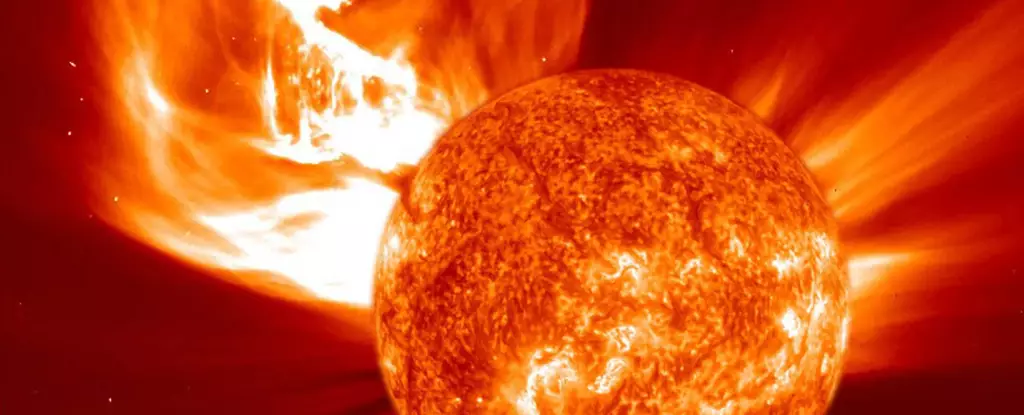The recent loss of three Australian CubeSats, known as Binar-2, Binar-3, and Binar-4 from Curtin University’s Binar Space Program, has ignited a conversation about the resilience of small satellites in the face of ever-changing space weather. Originating from the Noongar word for “fireball,” the Binar satellites were always destined to encounter the harsh realities of Earth’s atmosphere upon completion of their missions. However, their lifespan turned out to be significantly shorter than anticipated, burning up just two months after deployment instead of the planned six months. This surprising twist serves as an enlightening case study for space agencies utilizing small satellites—a reminder of the unpredictable nature of space.
These CubeSats were intended to contribute to scientific knowledge and technological testing, making their loss all the more pronounced. The immediate cause behind this abbreviated mission is linked to intensified solar activities, raising questions about the implications for similar future endeavors. Essentially, while satellites in Low Earth Orbit (LEO) naturally degrade over time due to orbital decay, recent increases in solar activity have heightened atmospheric drag, hastening their re-entry and destruction.
As a fundamental aspect of astrophysics, solar activity arises from the Sun’s dynamic magnetic conditions, which follow an irregular cycle peaking approximately every 11 years. The recently termed solar cycle 25 is currently nearing its peak, featuring heightened solar flares, sunspots, and variances in the solar wind. These phenomena not only impact satellite operations but also generate significant space weather that has become increasingly challenging for operators to forecast accurately—a notable concern for agencies reliant on satellite data for a plethora of applications.
The periodical peaks of solar activity can lead to conditions resulting in charged particles interacting with satellites in LEO. This interaction can disrupt satellite operations, leading to potential failures. In recent months, emerging data suggests solar activity levels have exceeded predictions by a striking ratio of 1.5, impacting not just the Binar CubeSats, but also positioning extensive systems like the International Space Station and the Starlink constellation at increased risk. These established satellites frequently deploy thrusters to mitigate atmospheric drag; however, such corrective measures are costly and not available for smaller CubeSats.
CubeSats like the Binar program’s projects were primarily designed for scientific exploration but lack the robust navigational tools that larger satellites possess. With no thrusters to alter their altitudes in response to increasing drag, the Binar satellites’ limited innovation capabilities left them vulnerable to the effects of enhanced solar activity. This situation underscores the significant gap in capability between small, university-operated satellites and substantial commercial entities that can absorb the financial toll of unexpected mission failures.
The Binar Space Program’s inaugural mission, Binar-1, launched during a comparatively tranquil phase of solar cycle 25 and managed a commendable 364 days in orbit. Initially projecting a similar resilience for its follow-up missions, the program assumed that advances in solar technology—the introduction of deployable solar arrays—would afford them extended life in orbit. The reduced operational duration of Binar-2, Binar-3, and Binar-4 poses serious concerns about the reliability and predictability of upcoming endeavors, catalyzing a broader conversation about CubeSat engineering and forecasting reliability in increasingly tempestuous solar climates.
While the loss of the Binar satellites is a setback, it brings forth crucial insights. The need for enhanced predictive models that can assess solar activity—and the subsequent effect on satellites—has never been more apparent. As satellite technology evolves and the demand for data continuity increases, new strategies will be vital to safeguard future launches against the dangers posed by solar phenomena.
As significant efforts are discussed for upcoming missions, including launching into less tumultuous conditions, it’s essential to reflect on the harsh lessons learned from Binar’s untimely demise. The program, despite its challenges, holds promise for future explorations into the Solar System, aiming to better understand not just space environments but also the demands placed on technology in a climate challenged by our Sun’s erratic nature.
While the immediate impacts of solar phenomena might instill concern for satellite operations, they also present an opportunity for growth and adaptation in spacecraft technology. As research continues, both academic and commercial operators of CubeSats must collaborate to navigate these turbulent skies—ensuring safer and more successful missions in the future.


Leave a Reply